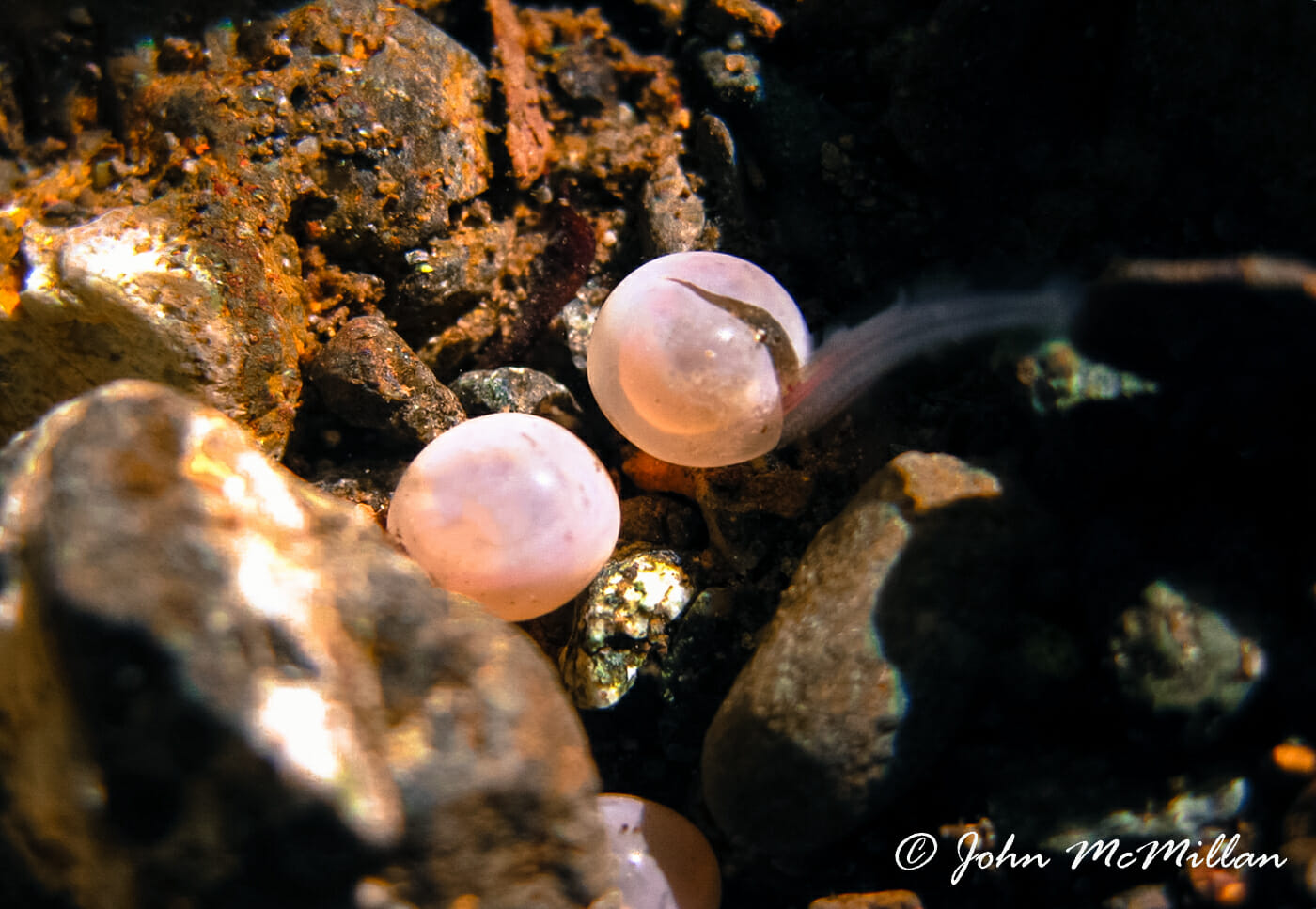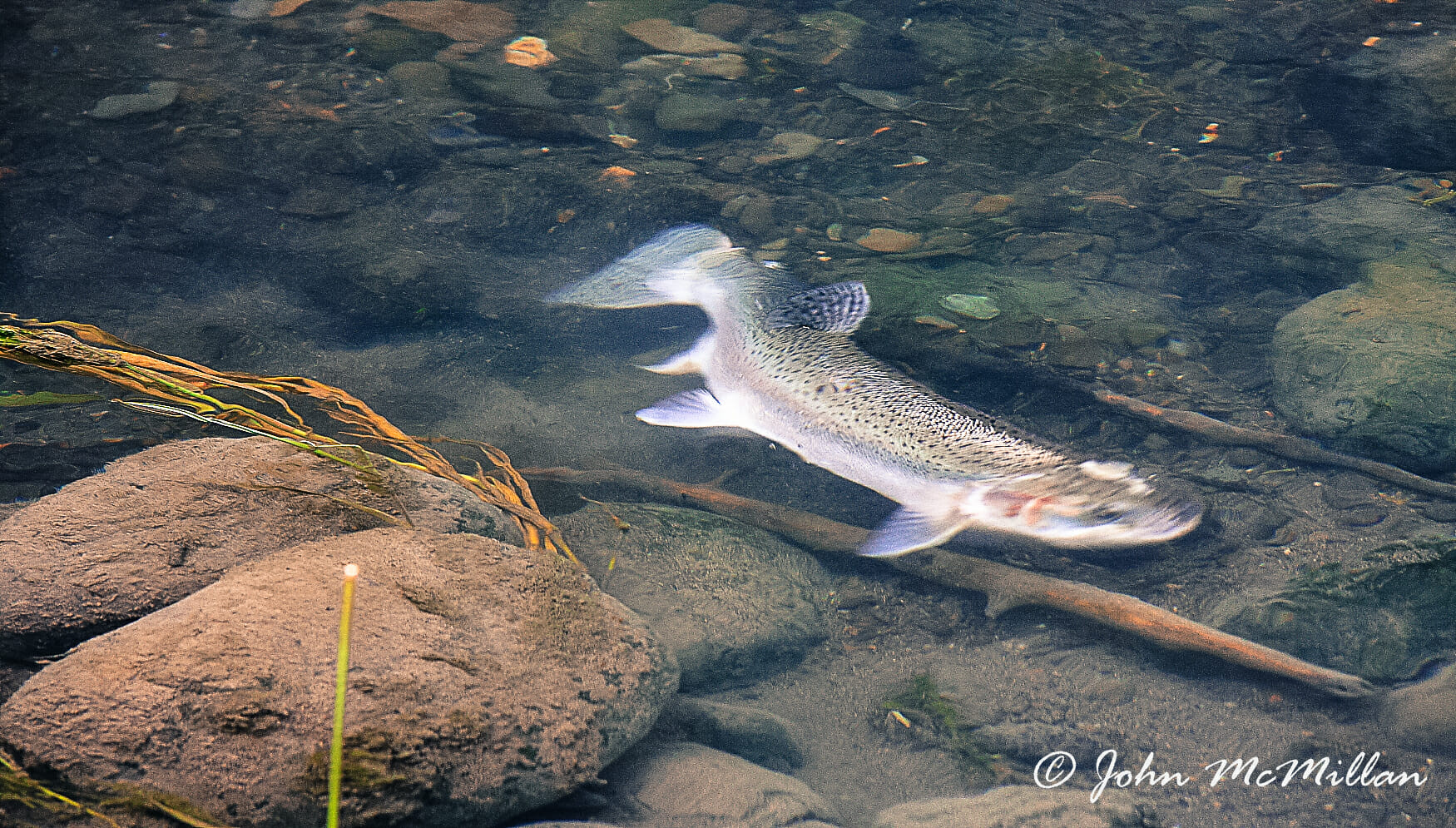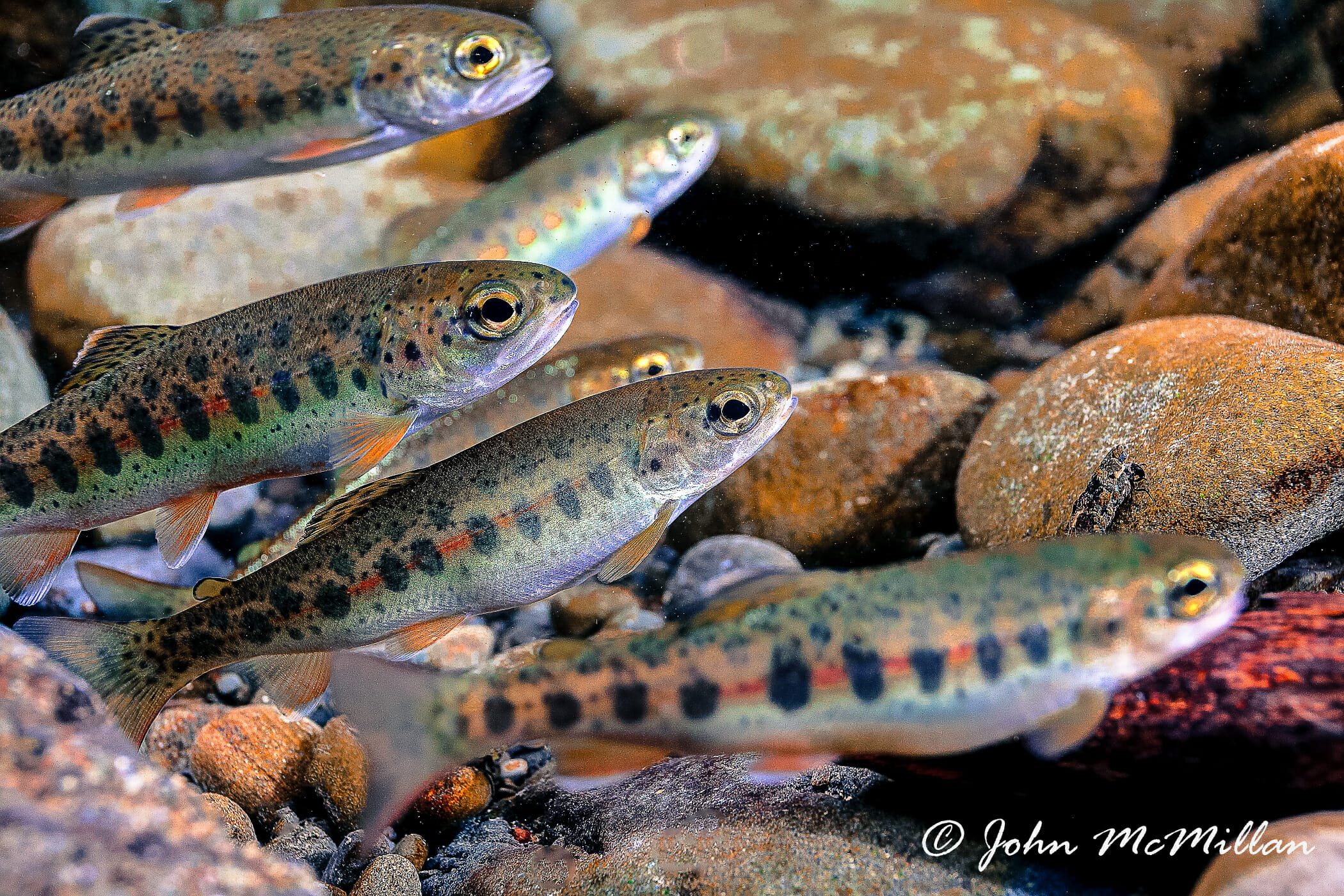By John McMillan
When we steelhead anglers think of steelhead water, we think of big, muscular rivers like the Skagit, Umpqua and Eel. We don’t usually think of small streams we can step across or even streams that go dry in the summer.
We should.
Those s
mall streams — even ones that intermittently go dry (known as ephemeral streams) — are often steelhead producers. Which is why we should be deeply concerned about the executive order issued today by President Trump that starts a process to remove small and ephemeral streams from the protections of the Clean Water Act, leaving them highly vulnerable to degradation and pollution.
 alt=”” title=”” />If you are a small juvenile steelhead or salmon trying to escape swollen rivers during the heavy rains of winter, you head for small tributary streams for protection. Small-sized young fish – which are poor swimmers – find refuge in such streams and thus can avoid being entrained in high flows and swept downstream in mainstem rivers. Also, research indicates that juvenile salmon and trout often grow better and survive at higher rates in ephemeral streams during winter than in larger streams that do not go dry.
alt=”” title=”” />If you are a small juvenile steelhead or salmon trying to escape swollen rivers during the heavy rains of winter, you head for small tributary streams for protection. Small-sized young fish – which are poor swimmers – find refuge in such streams and thus can avoid being entrained in high flows and swept downstream in mainstem rivers. Also, research indicates that juvenile salmon and trout often grow better and survive at higher rates in ephemeral streams during winter than in larger streams that do not go dry.
Adult steelhead and salmon use small and ephemeral streams, too. They spawn in them. You might wonder why an adult fish would choose to spawn in a stream that goes dry for part of the year.
There are two reasons. First, eggs laid in large rivers are more prone to being scoured from the gravel during floods. So to hedge their bets, biologically speaking, some adults lay their eggs in small streams. Second, fish can successfully spawn even in ephemeral streams because young fish (fry) emerge from the gravel and move downstream before the stream channel dries up. These fish are finely tuned to the seasonal variations of their native habitat.
 alt=”” title=”” />Small and ephemeral streams, as well as wetlands, are also important to maintaining fish habitat throughout river basins. During floods, these areas dissipate energy, which helps maintain key habitat features in larger rivers and streams such as trees and boulders that provide both a food base for fish and protection from predators.
alt=”” title=”” />Small and ephemeral streams, as well as wetlands, are also important to maintaining fish habitat throughout river basins. During floods, these areas dissipate energy, which helps maintain key habitat features in larger rivers and streams such as trees and boulders that provide both a food base for fish and protection from predators.
They also store water. During the wet part of the year water seeps into the ground and is slowly released over time, providing a source of water during the dry summer and early fall months.
Small and ephemeral streams are easy to ignore, but we can’t if we want to continue to fish for wild steelhead and salmon.
Write your legislator today and tell them to protect clean water.



